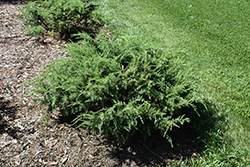It's all about ...
plants

Tortuga® Juniper
Juniperus communis 'SMNJCB'
Height: 24 inches
Spread: 4 feet
Sunlight:
![]()
![]()
Hardiness Zone: 2a
Brand: Proven Winners
Description:
A low-mounded groundcover evergreen, with pleasing emerald green foliage; exceptionally tough and hardy, and will tolerate the most adverse conditions, particularly dry sites; transforms difficult sites into a carpet of green
Ornamental Features
Tortuga® Juniper is a dwarf conifer which is primarily valued in the garden for its broadly spreading habit of growth. It has attractive green evergreen foliage. The needles are highly ornamental and turn coppery-bronze in the fall, which persists throughout the winter.
Landscape Attributes
Tortuga® Juniper is a multi-stemmed evergreen shrub with a ground-hugging habit of growth. It lends an extremely fine and delicate texture to the landscape composition which should be used to full effect.
This is a relatively low maintenance shrub, and should not require much pruning, except when necessary, such as to remove dieback. Deer don't particularly care for this plant and will usually leave it alone in favor of tastier treats. It has no significant negative characteristics.
Tortuga® Juniper is recommended for the following landscape applications;
- Mass Planting
- Border Edging
- General Garden Use
- Groundcover
Planting & Growing
Tortuga® Juniper will grow to be about 24 inches tall at maturity, with a spread of 4 feet. It tends to fill out right to the ground and therefore doesn't necessarily require facer plants in front. It grows at a slow rate, and under ideal conditions can be expected to live for approximately 30 years.
This shrub does best in full sun to partial shade. It is very adaptable to both dry and moist growing conditions, but will not tolerate any standing water. It is considered to be drought-tolerant, and thus makes an ideal choice for a low-water garden or xeriscape application. This plant should not require much in the way of fertilizing once established, although it may appreciate a shot of general-purpose fertilizer from time to time early in the growing season. It is not particular as to soil type or pH. It is highly tolerant of urban pollution and will even thrive in inner city environments. This is a selection of a native North American species.
